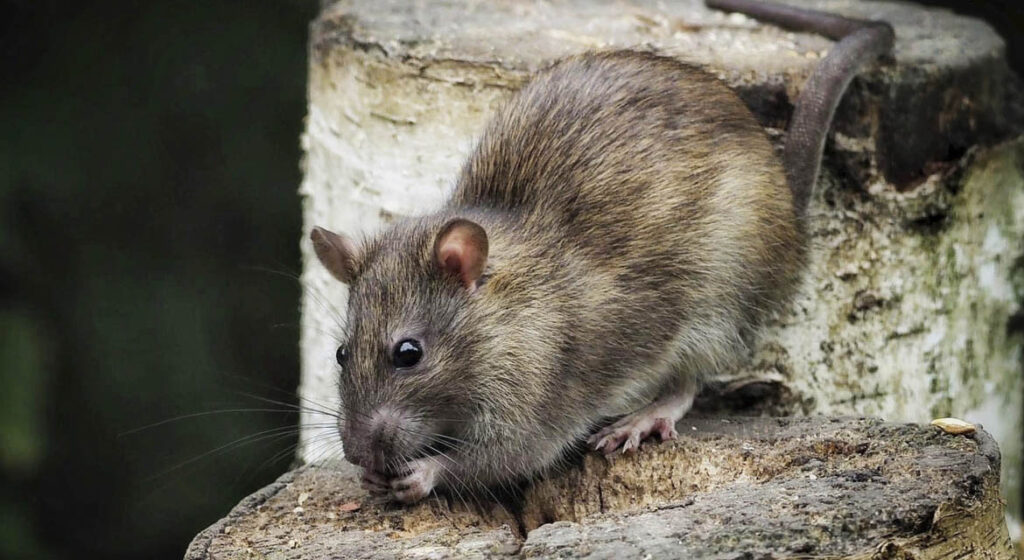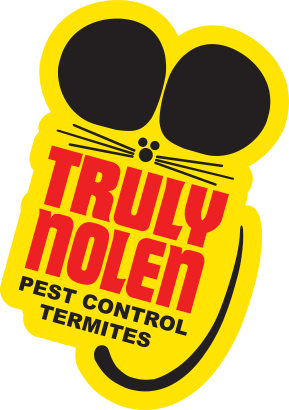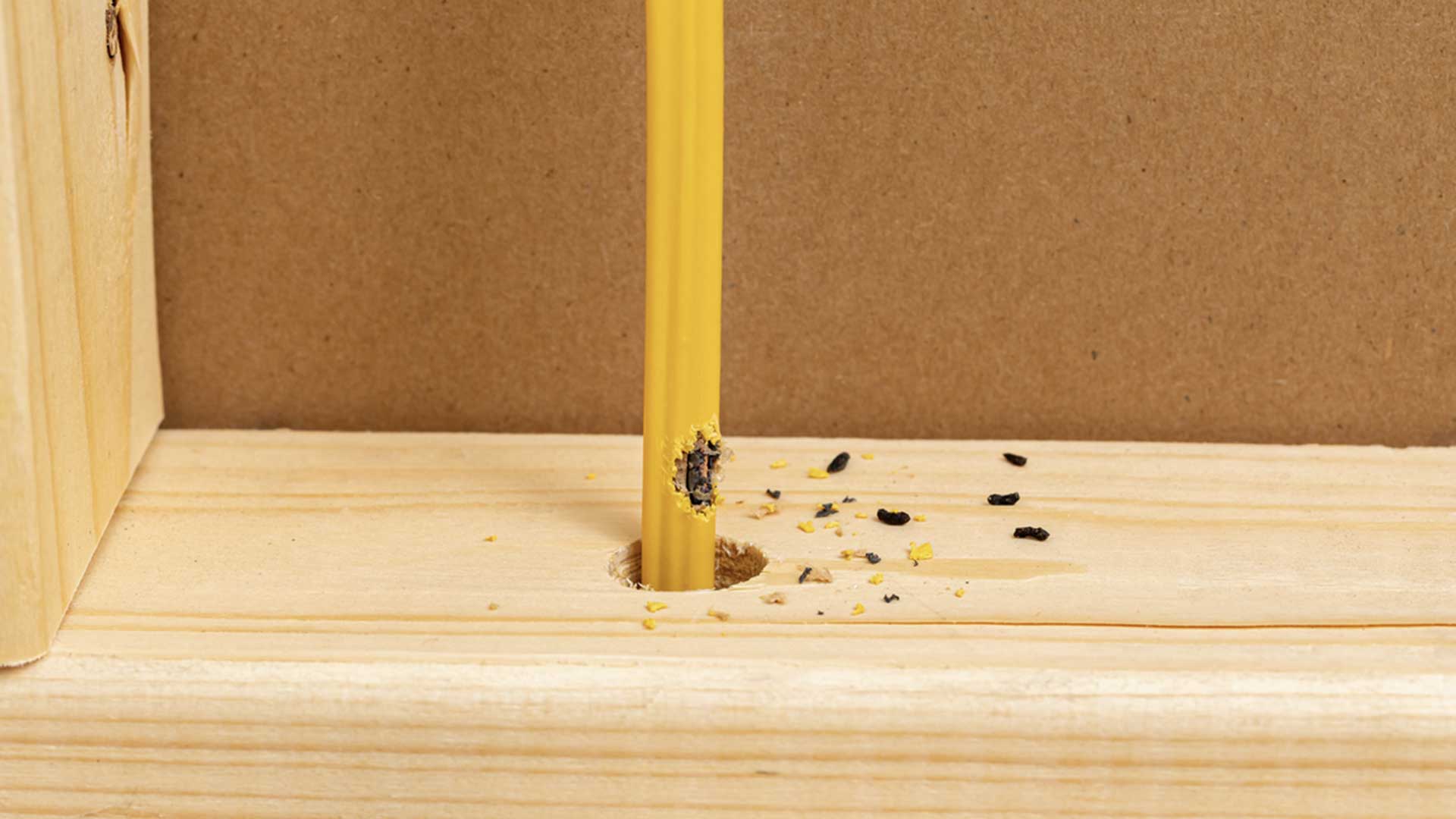
How Do I Know If I Have a Rat Infestation?
Identify a rat infestation through physical evidence like droppings, gnaw marks, rub marks, nests, and auditory cues such as scratching sounds and musky odors. Additionally, be vigilant for signs of damage like chewed wires, damaged insulation, holes, and sightings of live or dead rats, particularly during their active periods at night. Here are three key points to identify an infestation:
- Identify a rat infestation by looking for physical evidence like droppings, gnaw marks, rub marks, and nests.
- Pay attention to auditory cues of scratching or squeaking sounds and strong, musky odors that may indicate rat activity.
- Notice signs of damage such as chewed wires, damaged insulation, holes, and sightings of live or dead rats, particularly during nighttime when they are active.
Signs of a Rat Infestation
Rats are persistent pests that can find their way into any type of building, from homes to commercial properties. They can cause all sorts of problems, from spreading diseases to causing property damage. Here are some signs to look out for:
Rat Droppings
Rat droppings are one of the most apparent signs of a rat infestation. They tend to be small and oblong in shape, similar in size to a grain of rice. You might find them around food sources or where rats frequently travel. Identifying rat droppings in your home or business as quickly as possible is essential because these droppings can carry various diseases, including Hantavirus, Salmonellosis, and Leptospirosis. If you suspect a rat infestation, it’s critical to take care when cleaning rat droppings to minimize your risk of contracting these illnesses.
When cleaning rat droppings, it’s essential to wear disposable gloves and a mask to prevent exposure to any airborne particles. After cleaning the droppings and the surrounding area with soap and water, disinfect the space using a solution of bleach and water. Dispose of any contaminated materials in a sealed plastic bag and dispose of them in an outdoor trash can.
Gnaw Marks
Gnaw marks are one of the most telltale signs of a rat infestation. Like other rodents, rats have teeth that grow continuously throughout their lifetime. They need to gnaw on things to keep their teeth from becoming too long. This means that rats will chew on almost anything to wear down their teeth, including wood, plastic, and even electrical wiring.
If you notice small, irregularly shaped holes or teeth marks on surfaces around your property, it could indicate that rats are present. These chew marks are often found on wooden furniture, baseboards, and even on electrical wiring in attics and walls.
Unfortunately, identifying chewed electrical wires can be difficult. The damage is often hidden behind walls or inside ceilings, making it tough to detect early on. However, there are a few key signs to watch out for. For example, if you notice any flickering lights or electrical appliances suddenly stopping working, it could be a sign of chewed wires. Similarly, if you smell burnt plastic or see scorch marks around outlets or light switches, this is also a telltale sign of electrical damage.
Gnaw marks can also be a sign of other rodent infestations, such as mice and squirrels. However, rat gnawing tends to be much more aggressive and destructive than mice or squirrel gnawing. Rats can cause significant damage to property and even pose a fire hazard if they chew through electrical wiring.

Truly Nolen GUARANTEE
If you’re not completely satisfied, you’ll get a full refund on your most recent service with our 100% money back guarantee.

$50 Off Year Round Pest Control
Truly Nolen is a family-owned company with 85 years of experience providing the best pest control. If you’re not completely satisfied, you’ll get a full refund on your most recent service with our 100% money back guarantee.
Grease Smudges
As rats travel along surfaces, they often leave behind greasy streaks caused by the oil on their fur. Look for greasy marks on walls and baseboards, especially in areas near food sources. Grease marks are not only unsightly, but they can also be an indicator of an active infestation. Rats tend to follow the same paths repeatedly, so the presence of multiple marks indicates a higher level of activity.
It’s important to note that grease marks are not just limited to rats. Other rodents, such as mice and squirrels, can also leave behind similar marks. However, if you see larger marks, it’s more likely to be evidence of a rat infestation. Additionally, if you notice tail marks or footprints alongside the greasy marks, this is another sign of rats.
Nibbled Food
Rats are notorious for eating just about anything, including pet food and dry foods. Check your pantry and cabinets for signs of nibbled food. Dispose of any damaged goods immediately. Any damage to food packaging can provide a gateway for bacteria, pests, or other harmful contaminants to enter and compromise the integrity of the food product.
Unfortunately, pet food is one of the biggest draws for rats. It’s essential to store pet food in a sealed container, preferably made of metal or glass, as rats and other rodents can easily chew through plastic or paper packaging. If possible, store pet food in a pantry or cupboard to keep it out of sight and smell range of these pesky critters.
It’s not just the pet food itself that can be a problem, but the crumbs and spills that come along with feeding our furry friends. Clean up any spilled pet food or crumbs immediately and dispose of them in a covered trashcan. Additionally, sweep or vacuum up any pet hair or debris left behind after mealtime.
In addition to attracting rats, pet food left out can also attract other pests, such as ants and cockroaches. These pests can contaminate the food and pose a risk to your and your pets’ health.
Urine Stains and Odors
Urine stains are often a telltale sign of a rodent infestation, particularly one caused by rats. These stains are caused by the urine that rats produce as they travel across the surfaces in your home or business. While these stains can be unsightly and emit a musky odor, they can also pose a health risk to anyone who comes into contact with them.
The appearance of urine stains varies depending on where they are found. On carpeted surfaces, the stains are often yellow or brown and tend to be concentrated in areas where rats enter or exit a room. On hard surfaces, such as tile or hardwood floors, the stains can be more challenging to spot, often appearing as slightly darker patches or discoloration on the surface.
Aside from their appearance, urine stains can also indicate electrical damage or potentially devastating structural problems. Rat urine is highly acidic and can corrode electrical wires, posing a risk of an electrical fire in your home or business. Moreover, if the rat infestation is active for a prolonged period, the urine stains can seep into walls and floorboards, causing rot and decay that can weaken the structural integrity of your property.
Urine stains are most commonly found near a rat nest, food sources, or on the path rats often take when they forage. Rats prefer to urinate on surfaces they frequently cross, so urine stains usually indicate rat activity. If you find urine stains in your home or business, you must take immediate action to identify and eliminate rodent infestation. Failing to do so can lead to a potential health hazard, as well as costly repairs down the line.
Scratching Noises
If you hear scratching noises in the walls, ceilings, or floors of your home or business, there’s a good chance you have a rat infestation. Rats are active at night, so you’re more likely to hear them then. If you suspect that rodents may be the cause of the sounds, there are a few signs to look out for. Rat droppings are often found near their nesting sites, so checking for them is essential. You may also notice small holes or entry points around your walls or ceiling where rodents have entered.
In addition to rodents, other pests like squirrels, raccoons, and birds can also cause sounds in your walls or ceiling. Squirrels and raccoons may try to enter your home through the roof or attic, and birds may take up residence in your walls.
No matter the cause of the noise, it’s crucial to take action as soon as possible. Pests can not only cause damage to your home but also pose health risks to you and your family. They can also attract other pests, making the problem even worse.
Nests and Burrows
Rats will often build nests in secluded areas of buildings, such as attics and crawl spaces. These small creatures need a place to call home, and they will create elaborate systems of tunnels and nests to do so. As a homeowner or business owner, it’s important to watch for these signs to prevent a full-blown infestation.
Rats can create a nest out of almost anything they can find, from paper and cardboard to insulation and fabric. These nests are often found in attics, walls, basements, and other dark and secluded spaces. If you notice shredded paper or cloth around your property, this could be a sign of a rat nest.
Burrows, on the other hand, are tunnels that rats dig in the ground or under structures. While not all burrows necessarily lead to a rat nest, they are still signs of an active infestation. Burrows can be found in yards, gardens, and other outdoor spaces.
It’s important to note that rats are not the only creatures that create nests and burrows. Other rodents, such as mice and squirrels, also create nesting areas. However, if you notice larger nests or burrows with signs of rat activity, it’s important to take action.
One of the best ways to prevent a rat infestation is to eliminate their nesting areas. This may mean sealing off entry points to your home or business, removing piles of debris from your yard, and properly storing food sources. Taking these steps can make your property less attractive to rats.
Seeing Rats (Eek!)
When it comes to rat infestations, one of the most obvious signs is actually seeing the rats themselves. Rats are primarily active at night, so if you do spot one during the day, it may be a sign of a more significant infestation. Keep an eye out for rats scurrying across the floor, along walls, or even up trees or buildings.
Rats are relatively large and have distinct features, making them easily recognizable. They have long, pointed faces, small ears, and a thick, scaly tail. Their fur is usually brown or black, and they can grow up to 9 inches long, not including their tail. Chances are good that if you see one rat, others are lurking nearby.

$50 Off Year Round Pest Control
Truly Nolen is a family-owned company with 85 years of experience providing the best pest control. If you’re not completely satisfied, you’ll get a full refund on your most recent service with our 100% money back guarantee.
Taking Action
When it comes to pest control, rats are one of the worst culprits. They can cause significant damage to your property, contaminate your food supply, and spread disease. Unfortunately, rat infestations are quite common, and many homeowners struggle to deal with them on their own. If you suspect that you have a rat infestation, it’s important to call in one of our trained Truly Nolen pest professionals as soon as possible.
The longer you wait, the worse the infestation can become. Even if you only suspect a rat infestation, it’s best to call a Truly Nolen technician to assess the situation. They can determine the severity of the infestation, locate any rat nests, and identify any potential entry points where rats may have gained access to your home.
Our pros use a variety of techniques to treat rat infestations. These may include baiting or trapping rats, sealing up entry points to prevent further infestations, and advising on how to prevent future infestations from occurring. Our technicians may also use techniques like fumigation or exclusion to eliminate rats from your property.
In some cases, DIY pest control methods may be effective for dealing with small rat infestations. However, larger infestations require the expertise of a pest professional. Attempting to deal with a large infestation on your own can be dangerous and may cause further damage to your property.
When it comes to eliminating rats, don’t delay. Call your local Truly Nolen pest professional to assess the situation and get rid of these pesky rodents once and for all. With expertise and experience, they can restore your peace of mind and protect your home and family from the dangers of rat infestations.

$50 Off Year Round Pest Control
Truly Nolen is a family-owned company with 85 years of experience providing the best pest control. If you’re not completely satisfied, you’ll get a full refund on your most recent service with our 100% money back guarantee.
Frequently Asked Questions
How do I know if I have a rat infestation?
Signs of a rat infestation include droppings, gnaw marks on food packaging or structures, greasy rub marks along walls or baseboards, scampering or squeaking sounds at night, and sightings of live or dead rats. A professional inspection can help confirm the presence of rats. Learn more about rats
Are rats dangerous?
Rats can pose various risks. They can transmit diseases such as leptospirosis and salmonellosis, cause structural damage by gnawing on wires and wood, contaminate food and surfaces with their droppings and urine, and their presence can trigger allergies and asthma symptoms in some individuals. Learn More!
How do I prevent rats from entering my property?
Rat prevention measures include sealing any gaps or holes in the building’s exterior, keeping vegetation trimmed away from structures, storing food in sealed containers, properly disposing of garbage, and maintaining cleanliness and sanitation practices.
Can I get rid of rats on my own?
While DIY rat control methods may be effective for small infestations, larger or persistent infestations often require professional assistance. Pest control professionals have the expertise, tools, and knowledge to effectively eliminate rats and implement preventive measures.
How long does it take to get rid of a rat infestation?
The duration of rat control can vary depending on the severity of the infestation and the effectiveness of control measures. It typically takes several weeks to completely eliminate a rat infestation, but ongoing monitoring and preventive efforts are necessary for long-term control.

